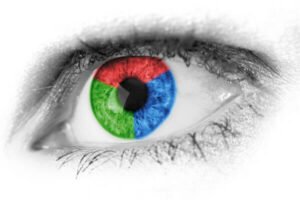In a world of compact living, the selection of colors becomes a crucial tool for transforming the visual perception of a space. In this article, we will delve deeper into the art of utilizing contrasts and optical effects through colors, tricking the eyes to create the illusion of more extensive and airy spaces. Discover how choosing, combining, and applying colors strategically can be the key to unlocking the maximum potential of small environments.
1. The Powerful Influence of Colors on Spatial Perception
Before delving into design tricks, it’s essential to understand the psychological and perceptual impact of colors. Light colors, such as white, pastels, and neutrals, tend to reflect light, creating a sense of spaciousness. On the other hand, dark colors absorb light, establishing a cozier atmosphere but potentially diminishing the perception of space.
Understanding how colors affect spatial perception is crucial to choosing the right palette for small environments. The goal is to strike a balance that not only visually enlarges the space but also makes it cozy and pleasant.
2. White and Neutral Tones: The Luminous Foundation for Compact Spaces
White emerges as a valuable ally in small spaces, serving as a luminous canvas that reflects light, making the space feel more open. Beyond pure white, neutral tones like beige, gray, and cream are equally effective choices. These colors not only visually expand the environment but also provide a versatile base for decoration.
By establishing a luminous base with white and neutral tones, you create a neutral environment that can be enhanced with pops of color in decorative elements. This allows for greater flexibility in adapting the space’s style over time.
3. The Power of Contrast: Highlighting Elements and Creating Depth
Introducing contrasts into the color palette is a skillful strategy to create focal points and add visual depth. For instance, combining light walls with darker elements, such as furniture or decorative details, creates a dynamic that attracts the eye and emphasizes specific areas.
Contrast is not limited to light and dark colors; it can be explored through the combination of complementary colors or even vibrant hues amid a softer palette. This approach adds vitality to the space while maintaining a sense of spaciousness.
4. Optical Effects with Stripes: Horizontal and Vertical Play
The strategic use of stripes can have a significant impact on spatial perception. Horizontal stripes, when applied to walls, create the illusion that the space is wider than it really is. Conversely, vertical stripes can visually elongate the walls, giving a sense of height.
These optical effects with stripes are particularly effective in spaces like narrow corridors or rooms. By choosing contrasting colors for the stripes, you intensify the effect, adding a stylish touch to the environment.
5. Monochrome: Simplicity and Visual Harmony
The monochromatic approach, based on a single color in different tones and intensities, offers an elegant solution for small spaces. This creates a sense of continuity and visual harmony, avoiding visual interruptions that may fragment the space.
By adopting monochrome, you can play with different textures and materials in the same color, adding depth without compromising the feeling of cohesion. This minimalist approach is particularly effective in creating a serene and balanced atmosphere.
6. The Illusion of Space with Dark Colors: Sophistication and Coziness
While conventional wisdom suggests light tones for small spaces, dark colors can be successfully employed to create a sophisticated and cozy atmosphere. The key lies in strategic application and consideration of design elements that maximize the potential of dark colors.
By choosing deep colors for an accent wall or specific furniture, you create a focal point that grabs attention without making the space feel oppressive. Contrast with lighter elements and the introduction of adequate lighting are crucial to balancing the boldness of dark colors.
7. Reflective Surfaces: Mirrors and Shiny Elements
In the quest to create the illusion of more space, incorporating reflective surfaces can be a game-changer. Mirrors strategically placed in small rooms can bounce light around, making the space feel brighter and more expansive. Additionally, furniture or decor items with shiny surfaces, such as metallic finishes or glass, contribute to this effect by adding a touch of glamour and further enhancing the play of light.
- Strategic Mirror Placement: How to position mirrors to maximize their impact on light reflection and spatial perception.
- Shiny Elements in Decor: Introducing reflective materials in furnishings and decorations for a stylish and luminous touch.
8. Thoughtful Use of Textures: Adding Depth and Interest
Textures play a vital role in visual depth perception. Incorporating a variety of textures in the color scheme can add richness and interest to a small space. For instance, combining smooth surfaces with textured ones, such as a plush rug or textured wallpaper, creates a tactile experience that contributes to a more dynamic and visually engaging environment.
- Tactile Contrast: Exploring the juxtaposition of different textures to enhance the sensory experience in compact spaces.
- Layering Textures in Design: How to strategically layer textures in furnishings and decor for a multidimensional look.
Conclusion: Colors as Magical Design Tools
By exploring design tricks involving contrasts and optical effects with colors, we unveil the magical potential of palettes to transform small environments. The strategic choice of colors is not just an aesthetic decision; it’s a practical tool to create visual illusions that enhance and amplify the experience in compact spaces.
The right color palette can be the key to unlocking the true potential of a space, providing a sense of spaciousness, balance, and style. By incorporating the science of colors and the art of design, you become the conductor leading a visual symphony, turning every square meter into a space that transcends its physical dimensions. Smart design goes beyond what the eyes see; it’s an experience that captivates, surprises, and delights, even in the most modest spaces.

